Many CRM implementations fail to reach their full potential due to departmental silos. This lack of integration creates roadblocks for customer information sharing and can result in fragmented customer experiences. This section explores practical ways to build a unified CRM system connecting departments like sales, marketing, customer service, and product development.
Aligning Team Objectives Around the Customer
A unified CRM strategy begins with aligning all departments around customer-centric objectives. This involves moving away from isolated departmental thinking toward a comprehensive view where each team understands their role in the customer journey. For example, sales teams should focus not only on closing deals but also on gathering customer insights that can inform marketing strategies and product improvements.
This shared customer focus creates a more cohesive customer experience and strengthens relationships. It also builds a collaborative environment where teams work together towards shared success.
Establishing Cross-Functional Workflows
A unified CRM requires cross-functional workflows that improve the customer experience. This means breaking down departmental barriers and creating processes for seamless information sharing. If a customer contacts customer service about a product issue, that information should be immediately accessible to the product development team.
Tools like AI-powered voicemail transcription and automated workflows within a CRM, such as those offered by AI Help Desk, can significantly streamline this process. These technologies enable efficient interdepartmental communication and collaboration.
Implementing Consistent Data Collection
Consistent data collection is crucial for a unified CRM approach. Consistent data ensures everyone operates with the same customer understanding. Imagine marketing sending promotions for products a customer has already complained about to customer service! Such disconnects can damage customer relationships. Implementing consistent data entry practices and integrating all data sources into a central CRM system establishes a single source of truth.
This unified customer view empowers departments to make informed decisions and personalize interactions. To improve customer loyalty and boost growth, explore strategies for boosting ROI of customer experience.
Overcoming Resistance to Collaboration
Implementing a unified CRM system often means overcoming resistance to collaboration. Some teams might hesitate to share information or alter existing workflows. Addressing these concerns requires clear communication about the benefits of a unified CRM system. Emphasizing how it improves efficiency, increases customer satisfaction, and drives business growth can help achieve buy-in.
Providing proper training and support can also ease the transition and ensure everyone is comfortable using the new system and processes. Investing in change management is essential for successful CRM integration.
Technological Solutions for Seamless Information Sharing
Technology is essential for facilitating seamless information sharing without overburdening teams. Select a CRM that integrates with other business tools, like marketing automation platforms and customer service software. This integration allows data to flow freely between departments, preventing data silos and providing up-to-date customer information.
Features like real-time data synchronization and automated reporting enhance efficiency and provide valuable insights into customer behavior. This data-driven approach enables teams to personalize interactions, anticipate customer needs, and deliver exceptional service. By embracing technology and fostering collaboration, businesses can fully realize the potential of CRM and build stronger customer relationships.
Next-Generation CRM: Technologies Reshaping Relationships
Keeping up with the latest CRM advancements is crucial for businesses aiming to elevate their customer relationship management. This means looking beyond the surface and understanding how technologies like AI and machine learning are genuinely transforming customer interactions.
The Power of Predictive Analytics
AI and machine learning are empowering CRM with predictive analytics. These tools analyze existing customer data to forecast future needs and behaviors. This allows businesses to proactively address issues, personalize offers, and elevate customer service. Imagine predicting customer churn and taking steps to retain that business before it’s lost.
Personalized Experiences and Intelligent Routing
Intelligent routing directs customers to the appropriate resources at the optimal time. This minimizes wait times and ensures customers connect with the most qualified agent. When combined with personalization engines, CRM systems offer highly relevant recommendations, boosting sales conversions and customer satisfaction. For instance, a small business using AI Help Desk can route calls based on AI-powered voicemail transcription, ensuring efficient handling of customer inquiries.
This personalized approach creates more relevant interactions, increasing customer engagement. The enhanced automation frees up human agents to handle complex issues and nurture stronger relationships.
Conversational AI and Mobile Accessibility
Conversational AI, including chatbots and virtual assistants, is rapidly evolving. These tools offer 24/7 customer service, answer FAQs, and even resolve simple issues. This improves the customer experience by offering immediate support.
Furthermore, mobile-first CRM acknowledges the multi-device world we live in. A mobile-optimized CRM allows sales teams, customer service representatives, and other staff to access customer data and engage with clients from anywhere. Mobile CRM apps provide access to critical information, communication tools, and customer insights in real-time, drastically improving response times and personalization.
Connecting Through Emerging Channels
Integrating emerging channels, such as messaging apps, into your CRM is essential for staying connected. Customers increasingly prefer channels like WhatsApp and Facebook Messenger for quick communication. CRM systems can now integrate with these platforms, providing seamless customer service and personalized interactions where customers are. This centralized approach keeps all communication within the CRM, creating a comprehensive record and enabling a more holistic approach to service.
Evaluating CRM Technologies
Choosing the right CRM technology requires careful evaluation of your specific business needs and customer expectations. Key considerations include:
- Implementation Complexity: Assess the technical expertise needed for setup and integration.
- Cost Considerations: Evaluate software licensing, implementation, and maintenance costs.
- Integration with Existing Systems: Ensure the CRM is compatible with your current software and workflows.
A small business, for example, might choose AI Help Desk for its easy integration with other tools through Zapier and its user-friendly interface, minimizing setup complexities.
CRM Technology Comparison
| Technology | Key Features | Business Benefits | Implementation Complexity | Cost Considerations |
|---|---|---|---|---|
| On-Premise CRM | Complete control over data, customizable features | High security, offline access | High, requires dedicated IT resources | High upfront investment, ongoing maintenance |
| Cloud-Based CRM | Accessibility from anywhere, automatic updates, scalable | Lower upfront costs, easy deployment, flexible | Low, minimal IT expertise needed | Subscription-based pricing, potential data security concerns |
| Industry-Specific CRM | Tailored features for specific industries | Streamlined workflows, improved efficiency | Moderate, may require industry-specific expertise | Higher cost than generic CRM, limited flexibility outside the specific industry |
This table highlights the trade-offs between different CRM deployment models and the importance of choosing a solution that aligns with your specific needs and resources.
Realistic Timelines and Implementation
Be pragmatic about implementation timelines and potential hurdles. Implementing new technologies takes time and careful planning. Begin with a defined strategy, prioritize essential features, and provide sufficient training for your team. Avoid trying to implement everything at once. Focus on the technologies that address your immediate requirements and gradually integrate others as your CRM strategy matures. By carefully evaluating these aspects, businesses can make well-informed choices about their CRM technologies and maximize their return on investment.
Proving CRM Value: Measuring What Actually Matters
If you can’t demonstrate a return on investment (ROI) from your Customer Relationship Management (CRM) system, its future is always in question. This section provides actionable strategies for measuring the true business impact of your CRM initiatives, going beyond superficial metrics.
Focusing on Meaningful KPIs
Forget superficial metrics. Instead, concentrate on Key Performance Indicators (KPIs) that resonate with business leaders and accurately reflect your CRM’s influence. These might include:
- Customer Lifetime Value (CLTV): Track how much revenue a customer generates throughout their relationship with your business. A rising CLTV indicates your CRM is effectively cultivating long-term customer relationships.
- Customer Churn Rate: Measure how many customers you lose over a specific period. A declining churn rate suggests that your CRM is improving customer retention.
- Conversion Rates: Monitor how effectively your CRM helps convert leads into paying customers. Increased conversion rates demonstrate that your CRM is optimizing the sales process.
These KPIs offer a clear understanding of how your CRM contributes to your bottom line.
Calculating Financial Impact
This goes beyond simply monitoring metrics. It involves calculating the actual financial returns derived from your CRM.
- Improved Retention: Calculate the cost savings from reduced customer churn. Retaining existing customers is generally much more affordable than acquiring new ones.
- Increased CLTV: Determine the additional revenue generated by your CRM through extending customer relationships and increasing their lifetime value.
- Enhanced Operational Efficiency: Calculate the cost savings from automation and improved workflows. Tools like AI-powered voicemail transcription within AI Help Desk free up staff time and boost productivity.
This financial data provides tangible proof of your CRM’s value.
Quantifying Intangible Benefits
While financial impact is critical, don’t ignore the intangible benefits.
- Improved Customer Satisfaction: While difficult to quantify financially, a rise in customer satisfaction generates positive word-of-mouth and strengthens brand reputation. Track customer satisfaction scores and testimonials to demonstrate this value.
- Enhanced Brand Loyalty: Loyal customers are more likely to become brand advocates and create repeat business. This results in long-term revenue growth.
These intangible benefits significantly contribute to overall business success.
Continuous Improvement Cycles
CRM isn’t a one-time setup. It requires continuous monitoring and adjustment. Regularly review your KPIs and pinpoint areas for improvement. Use this data to refine your CRM strategy, implement necessary changes, and monitor their impact. This ongoing cycle ensures your CRM is constantly optimized for maximum effectiveness. For instance, tracking customer feedback through your CRM can highlight areas for product or service enhancements.
Communicating CRM ROI
Present the data clearly and convincingly. Visualizations like charts and graphs help demonstrate the financial and intangible benefits. Sharing case studies and success stories of organizations successfully using CRM can further bolster your argument. This clear narrative reinforces the value of your CRM and secures ongoing stakeholder support.
By focusing on these measurement strategies, you can clearly demonstrate the ROI of your CRM initiatives, building a compelling case for continued investment and ensuring that your CRM remains a vital part of your business’s success.
Ready to elevate your customer relationship management and explore the potential of AI? Visit AI Help Desk today to learn more and begin your free trial!




